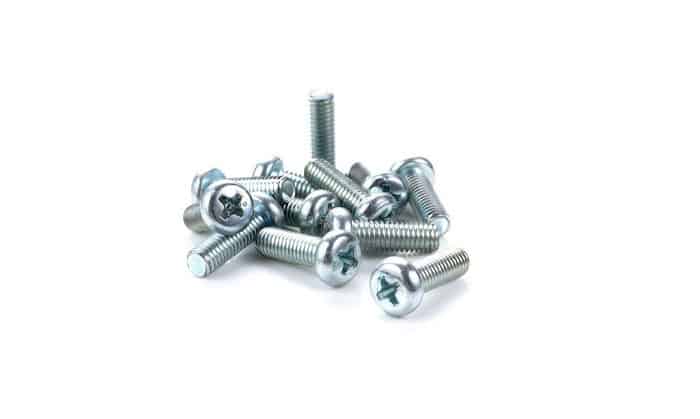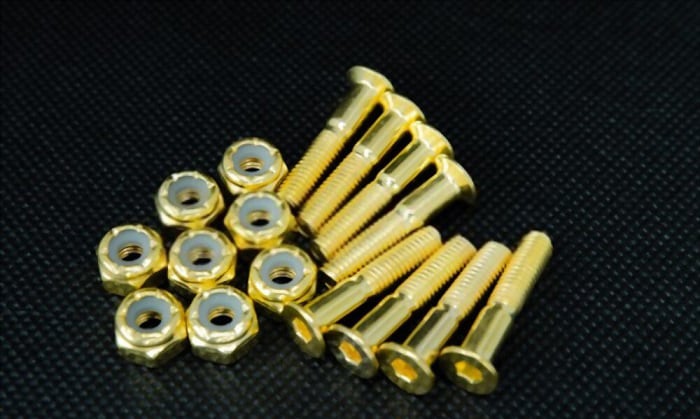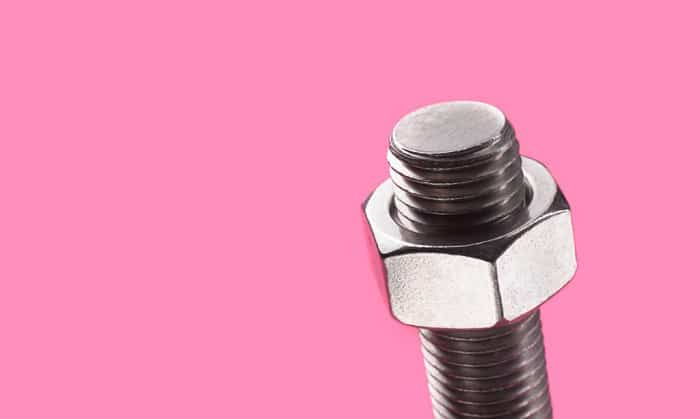The hardware is the backbone of any mechanical equipment. It makes the parts of a machine work collectively and without breaking into pieces.
And like any mobile object, skateboards also need hardware for several reasons. First, they need something to hold their parts firmly. Second, quality hardware ensures the skateboard will perform efficiently.
If you happen to be replacing old hardware but have no idea where and how to start, it’s time to get into this skateboard hardware guide. Here, we’ll discuss the perfect skate hardware size, types, and a few tips to remember before buying.
Table of Contents
What Is in a Skateboard Hardware Kit
1. Bolts
We can categorize these parts in two ways.
#1. Based on tightening slot
- Phillips-head – Almost everyone knows about this type of hardware because of its cross-like tool slot. It’s easy to maneuver, and its corresponding screwdriver is present in almost any tool store around.
- Allen-head – Slightly lesser in popularity than the former, allen-head bolts work the same way as the Phillips-head. The only difference is their hexagon slot. The good thing is allen wrenches are now part of a skateboard T-tool.
#2. Based on shape
- Dome – Besides the form of the adjustment tool slot, you may also want to consider the surface of the hardware’s bolts.
- A bolt may have a dome shape, which is widely used with longboards. Using them for technical skateboards might only bother your feet, especially on bumpy trails.
- Flat – These bolts are perfect for skateboards used for tricks. They’ll allow you to jump or go over rough surfaces every time. So, having flat-headed bolts won’t hurt your feet.
#3. Skateboard Truck Bolt Size
For better illustration, our skateboard hardware size chart will discuss bolt sizes for longboards and skateboards separately.
For skateboards with 7-ply decks
- 7/8 skateboard hardware – Wheel size range of 49mm to 54mm. Riser pads may be unnecessary.
- 1″ to 1 1/8″ – Wheel size of 55mm to 57mm with a 1/8″ riser pad
- 1 1/8″ to 1 1/4″ – 58mm to 64mm rollers with 1/4″ riser pads
- 1 1/4″ to 1 1/2″ – 65mm to 67mm wheels paired with 1/2″ riser pads
Any skateboard screws size larger than the list above will be ideal for wheel sizes of at least 68mm and riser pads above 1/2″.
For longboards with 8 to 9 plies of deck
- 1 1/8″ – 49mm to 54mm wheel size
- 1 1/4″ to 1 1/2″ – 55mm to 64mm rollers with 1/8″ to 1/4″ riser pads
- 1 1/2″ to 2″ – Wheel size of around 65mm to 67mm and a riser pad of 1/2″
Any hardware beyond 2-inch long will fit longboards with wheel sizes above 68mm and riser pads with a minimum of 1/2″.
We specified these set-ups to ensure that your bolts will be long enough to mount and lock the nut on the other end. They need not be too long as this is unnecessary and will not yield good results.
As a rule, your bolts need to stick out around less than 1/4 of an inch. That way, the nuts can completely thread onto the bolts.
2. Nuts
This hardware mounts the entire structure from the deck down to the trucks. Let’s see the most appropriate sizes for it.
- Baseplate – 10-32 hardware
- Wheels – Skateboard hardware 10/32 or 5/16″
- Kingpin – 3/8″ diameter, 24 thread hardware
Does Hardware Size for Skateboard Relate to Deck Width
Whether you have an 8.25 deck or an 8.0 deck or are looking for hardware for 8.5 deck, you can still choose your hardware based on the specifications above.
Skateboard deck size has no direct relation to the hardware you should choose. What matters more is the depth the hardware has to go through, which consists of the deck, riser pads, and the truck.
Pro tips:
- Skateboard mounting hardware loosens over time. Thus, you need to check and keep it tight now and then to ensure you’re still skating with secure bolts.
- If your hardware tends to wobble too quickly, you might need a replacement.
- Never over-tighten your bolts against the deck. Tighten them until their heads level the stepping surface of the skateboard. Doing otherwise will create cracks on the deck.
Conclusion
Maintaining skateboards is a habit. It’s not something you can do only in your spare time. And just like professional skateboarders, you have to be pretty particular regarding the tiny details of your skateboard.
With this skateboard hardware guide, you will not only have sufficient references when buying and modifying your skateboard. You also get to help other skateboarders in choosing appropriate skateboard hardware.
Keep your skateboard in good shape. Did you like this article? Tell us what you think in the comments section.

Hi, I am Charles Harris. I opened this site to write as much as I can about my biggest passion – skateboarding!
I started as a clumsy yet passionate rookie 10 years ago to now a still passionate yet much better skateboarder! But I have to tell you, the whole journey has always been fun and rewarding, indeed not without hardship.




